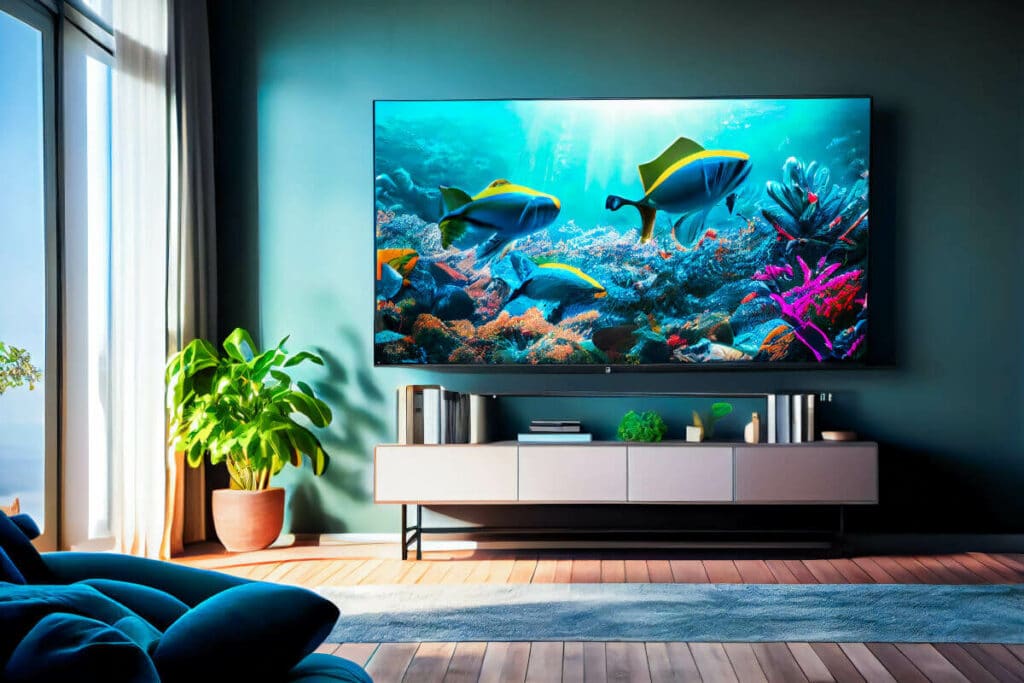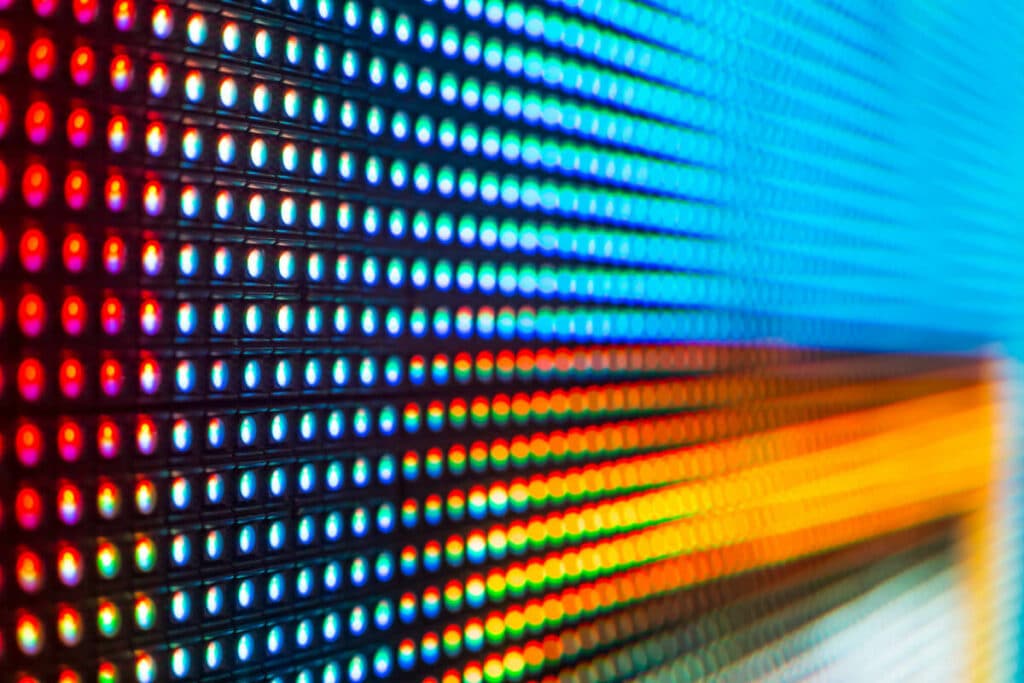the essentials in brief
Is QLED or OLED better?
OLED has excellent contrast ratios and deep blacks, while QLED has higher brightness and more vivid colors. The best way: Compare both and choose the option that suits you better.
Is LED or LCD better?
LED displays are typically better than LCD displays as they offer better power efficiency, deeper blacks, and higher contrast ratio. However, LED displays are often more expensive than LCD displays.
QLED or 4K, which is better?
QLED displays are also typically 4K displays, but a QLED display with 4KResolution offers better color representation and brightness compared to a basic 4K display. You can read more about QLED here.
"QLED or OLED?" Many people who are looking for a new television ask themselves this question. But what is actually behind these terms and which display technology is the better choice for you? Find out more about the various display technologies, their advantages and disadvantages and what the differences are in this article. In the end you will be able to decide which is the better choice for you.
Contents
What are QLED and OLED?

QLED and OLED are two different types of screen technologies, which are used to display content on devices such as TVs, monitors, and smartphones. Both technologies have their pros and cons and are chosen based on the needs and preferences of consumers.
QLED stands for "Quantum Dot Light Emitting Diode" and is an evolution of traditional LCD (Liquid Crystal Display) technology. Use QLED screens tiny crystals, called quantum dots, which emit light to display images. These Quantum Dots are able to wide spectrum of colors to produce and thus a very realistic and colorful image to represent. QLED screens also have one very high brightness and are able to accurately represent very dark and bright areas on the screen.
LCD technology
LCD (Liquid Crystal Display) is one of the most common flat panel display technologies and is used in a variety of devices such as televisions, computer monitors, cameras, and mobile devices. The technology is based on the properties of liquid crystals, which are used to control the light that shines through the screen.
OLED stands for "Organic Light Emitting Diode" and is another type of screen technology based on the use of organic materials that emit light to display images. Unlike QLED screens that require a backlight to display content, emit OLED screens her own light and are therefore able very thin and light devices to manufacture. OLED screens also have one very high contrast rate and can display very dark and bright areas on the screen without distortion.
Pros and cons of OLED
The biggest advantage of OLED technology is how it works. There OLEDs directly with a voltage of one to five Volt will be operated less electricity requiredto create brightness and colors. This is especially important when people need optimal energy efficiency for certain devices. In general, OLEDs can shine brighter, which means that you Beam angle is better than that of LCDs.
On the other hand, there are also some disadvantages that should be considered. While generally more robust than LCDs, they are not completely indestructible. The Runtime OLED light emitting diode can be lower, as colors may fade over time. Another downside is that OLEDs are brighter than LCDs, so they're a little bright in bright conditions harder to read are.

Pros and cons of QLED
The most important advantage of a QLED TV is its amazing picture quality. The use of quantum dots ensures that the colors are vivid and the black depths are very dark. There is also a wide range of color scales that will give your eyes a lot of pleasure. To take this image quality even further, QLED has one high contrast sharpness, which means that even the smallest differences clearly visible are.
Another big plus of QLED is that it has a wide range of connectivity options features, including HDMI and USB to connect many different devices to your TV. In addition, due to its high visibility, it has an impressive black level, so that black looks black on the screen and not "grafted".
While there are a variety of benefits, there are also some downsides to consider. One of the biggest disadvantages is that higher price compared to other television technologies. Since QLED is not only expensive but also more difficult to produce, it is usually the most expensive on the market. In addition, the use of quantum dots causes a higher light emission than other LED and LCD TV technologies, meaning they're brighter, but theirs service life shorter is than other technologies.
QLED vs. OLED
screen
OLED-TVs feature a proven organic LED display design that transforms images into vivid colors and provides very detailed patterns. Because of the powerful contrast and incredible color space coverage, the colors look great on OLED TVs very realistic out of. On top of that, OLEDs do not need a backlight, resulting in more authentic reproduction of light and dark areas.
QLED-In contrast to OLEDs, televisions have a film substrate and direct LEDs, which enable intense, vivid color reproduction. Compared to OLED TVs, they offer a solid contrast ratio and produce deep blacks that make it easier to see screen detail and image quality. In addition, they benefit from a improved brightness and a bigger color space than their OLED counterparts.

Backlight
OLED-TVs use a pixel-based backlight, meaning that the pixel be directly illuminated. QLED-Television, on the other hand, use one single, more efficient, multi-level driven backlight, which spreads evenly across the screen and offers brighter brightness than an OLED TV.
Energy Efficiency
Additionally, energy efficiency is another factor to consider when comparing OLED vs QLED. Compared to OLED TVs, QLED TVs are more efficient and consume less energy than the OLEDs.
Gaming
When it comes to gaming, it's important to have a low input delay to ensure a smooth gaming experience. In this regard, QLED has an advantage as it tends to have lower input lag than OLED displays. This means yours Commands appear on screen faster become and you thus a have a smooth gaming experience. Because of this, be QLED displays often preferred for gaming, such as for the new Switch.
Price
When it comes to price, OLED tends to be more expensive compared to QLED. However, this is not an absolute indicator of which device is better, as the Price range goes very far for both technologies. So it pays to consider other factors like size, features, and brands when making your decision.
What is better?
In summary, both OLED and QLED displays have their pros and cons. While OLED displays a perfect black display and excellent contrast rate offer, QLED displays have one higher brightness and lower input lag, which is important for a smooth gaming experience. When asked which is better, the answer depends on your individual needs and preferences as to which device is right for you.
Tip: Check online for tests. Many magazines and websites offer tests. There you can read more about the results of these tests and decide for yourself which TV is the better one.

the essentials in brief
In short, OLED and QLED TVs offer each have unique advantages and disadvantages. Both types of televisions allow for a very realistic image quality, but offer different features and functions. When you play games and movies a rich and realistic color spectrum estimate is OLED the better choice. However, if you are more Quality and cost savings pay attention, then there is a QLED television the right way.


![LG OLED65CS9LA TV 164 cm (65 inch) OLED TV (Cinema HDR, 120 Hz, Smart TV) [model year 2022]](https://m.media-amazon.com/images/I/410ZwMXJdgL.jpg)
![Samsung QLED 4K Q60B 43 Inch TV (GQ43Q60BAUXZG, German Model), Quantum HDR, Quantum Processor Lite 4K, Multi View, Smart TV [2022]](https://m.media-amazon.com/images/I/51xqt+dRJpL.jpg)